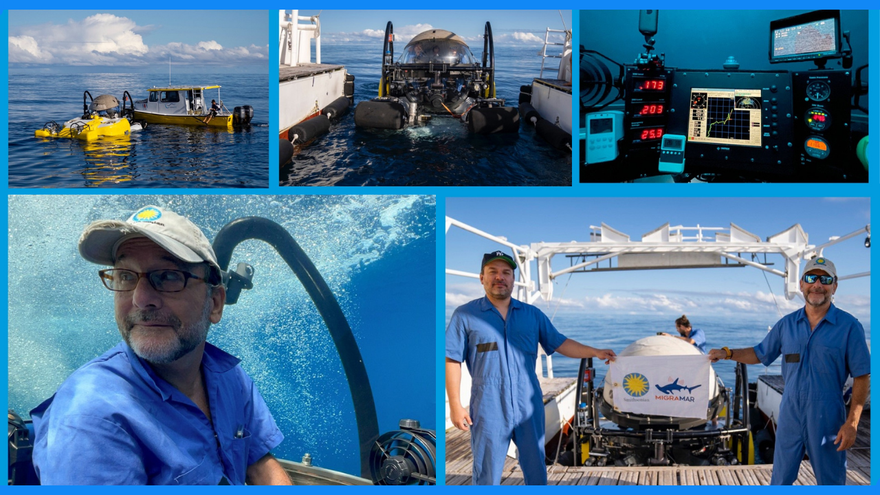The expedition focused on a series of seamounts located in the Panama Reserve, an unexplored area until the end of last April, when members of the expedition submerged in water to observe, photograph and sample the biodiversity of the area.
See also: Science aboard mini-submarines: How do deep-ocean investigations work?
The group of scientists left on April 27 on the ship M/V Argoheaded to the seamount chain and stayed there for about two weeks, taking daily snorkeling on board DipsyIt is a small submarine that allowed them to reach depths of up to 350 meters.
In total, four mountains were explored in the Cordillera, coral and rock samples were taken thanks to the robotic arm DeepSee, and more than 900 hours of video were recorded for all species that crossed the paths with the submarine, the marine ecologist explained in detail Hector Guzman, of the Smithsonian Tropical Research Institute (STI) and Migra Mar, the lead investigator.
One of the techniques used to attract the attention of the species and record it in more detail was the Remote Underwater Video System with Bait or BRUVS, for its English acronym, which has a special metal hull submerged with video cameras and a space with bait. Which invites different predatory species to approach.
Thanks to records with the BRUVS system and photos taken from the submarine, it was possible to verify the abundance of animals, their diverse sizes and the large number of highly migratory species found in the seamounts.
Several species of sharks have been observed, such as thresher shark ( Alopias pelagicus), an uncommon type; hammerhead shark ( Sphyrna lewini), is in danger of extinction; or black prickly shark ( Echinorhinus cookie)are familiar in depth, and therefore difficult to study.
An abundance of soft yellow corals, crustaceans, eels, sponges, cucumbers, starfish and various fish such as Masturus lanceolatus or mola coliaguda, in addition to the multiple rocks that will be analyzed to better understand the geological origin of the mountain range, other records have been the result of exploration, which will help to better understand and protect this marine reserve identified by Mission Blue spot of hopeor a unique and vital place for ocean health.
In the following months, the samples and images taken will be studied to check whether the expedition was able to discover new species, and as a preliminary result, the results indicate that this marine area is of great importance for migratory marine species.
The Cordillera de Cuiba Marine Protected Area was expanded in mid-2021 from 17,000 square kilometers to 68,000 square kilometers, allowing the country to achieve the goal of the “30 x 30 Initiative” Global Framework for BiodiversityWhich consists of protecting 30% of the countries’ marine areas before 2030.
The next step was recorded at the beginning of the year, with the approval of the Ministry of the Environment of Panama for the new Cordillera de Cuiba Protected Area Management Planto me March 3, 2022 decision.
See also: Panamanian who discovered ancient bacteria in Anton Valley gets research chair in Canada
And now it is the turn of science to generate knowledge about the marine reserve through this first expedition mission, in which scientists participated MigraMar, International Maritime University of Panama, University of Costa Rica, Center for Research in Marine and Marine Sciences, Malbello Foundation and STRIAmong other benefactors.



:quality(70)/cloudfront-us-east-1.images.arcpublishing.com/metroworldnews/IIDTF7KPERCHTDABVTHYULQC7E.jpg)

